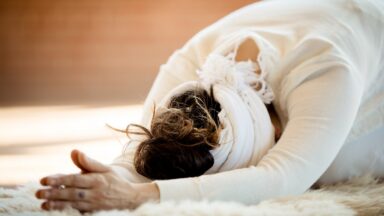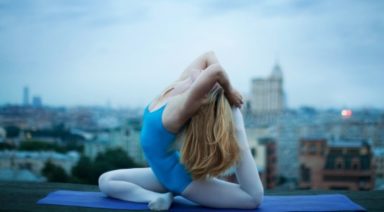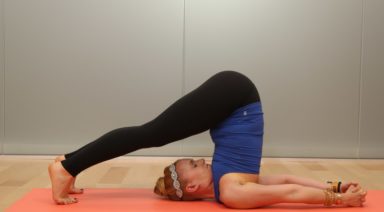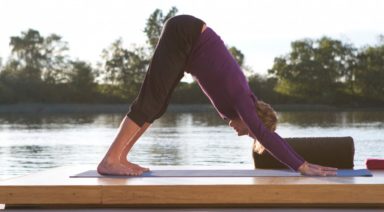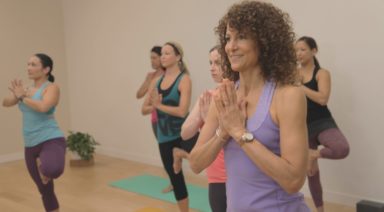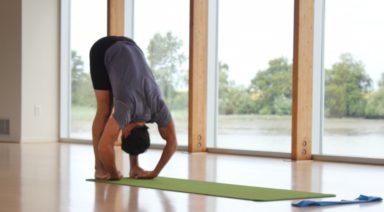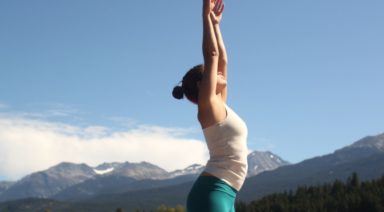Pranayama for Health and Vitality

What Is Prana?
Prana is the sum total of all energy that is manifested in the universe. It is the vital force, Sukshma. Breath is the external manifestation of Prana. By exercising control over this gross breath, you can control the subtle Prana inside. Control of Prana means control of mind. Mind cannot operate without the help of Prana. It is the Sukshma Prana that is intimately connected with the mind. Prana is the sum total of all latent forces which are hidden in men and which lie everywhere around us. Heat, light, electricity, magnetism are all the manifestations of Prana. Prana is related to mind; through mind to the will; through will to the individual soul, and through this to the Supreme Being.
The seat of Prana is the heart. Prana is one; but it has many functions to do. Hence it assumes five names according to the different functions it performs, viz., Prana, Apana, Samana, Udana and Vyana. According to the different functions they perform, they occupy certain places in the body.
Breath directed by thought under the control of the will is a vitalising, regenerated force which can be utilised consciously for self-development, for healing many incurable diseases and for many other useful purposes. Hatha Yogins consider that Prana Tattva is superior to Manas Tattva (mind), as Prana is present even when mind is absent during deep sleep. Hence Prana plays a more vital part than mind.
If you know how to control the little waves of Prana working through mind, then the secret of subjugating the universal Prana will be known to you. The Yogin who becomes an expert in the knowledge of this secret, will have no fear from any power, because he has mastery over all manifestations of power in the Universe. What is commonly known as Power of Personality is nothing more than the natural capacity of a person to wield his Prana. Some people are more powerful in life, more influential and fascinating than others. It is all through this Prana, which the Yogin uses consciously by the command of his will.
Pranayama
Prana
Vital force, vitality, nourishment, upward flowing
Yama
Control
- Ujjayi (Victorious breath)
Sit comfortably, easily. Close the mouth. Inhale slowly through both the nostrils in a smooth, uniform manner.
Expand the chest when you inhale. During inhalation a peculiar sound is produced owing to the partial closing of glottis. The sound produced during inhalation should be of a mild and uniform pitch. It should be continuous also. This breath technique may be practised even when walking or standing – exhale slowly through both nostrils making the same sound.
Benefits: This removes the heat in the head. The practitioner becomes very beautiful. The gastric fire is increased. It removes phlegm in the throat. Asthma, snoring, beneficial for thyroid problems, consumption and all sorts of pulmonary diseases are cured. All diseases that arise from deficient inhalation of oxygen and diseases of the heart are cured. All works are accomplished by Ujjayi Pranayama. The practitioner is never attacked by diseases of phlegm, nerves, enlargement of spleen, dyspepsia, dysentery, consumption, cough or fever. Improves mental health and particularly the nervous system. Perform Ujjayi to destroy decay and death.
- Kapalabhati (the breath of fire or the skull shining breath, invigorating, energizing, and purifying)
Very active forced exhalations with a passive inhalation – while exhaling – quickly pump the belly into the back of the spine forcing the air out of the nose. Place one of your hands on your belly if you so wish in order to feel more the action. KEEP STEADY RHYTHM. Do 3 sets of 30 repetitions.
Avoid if under high medication for blood pressure, recent abdominal surgery/injury or pregnancy.
Benefits: Maintains good health and fights disease, nadis (nerves) of the brain get good exercise, regular practice (10-15 min daily) will aid in riding forehead of wrinkles, improves luster of skin, strengthens nerves and brain centers, massages internal organs.
- Bhastrika (Bellow’s breath)
Rapid sucession of forcible breaths. Sitting in Vajrasana (hero’s pose or kneeling), hands resting on your lap, palms facing upward. Take a few calming natural breaths to prepare. Bring your hands in a fist position by the side of your shoulders. – Inhale powerfully through the nose and raise your arms above your head with open hands, exhale forcefully as you bring your arms back to starting position, continue for the required amount of repetitions. On the last exhalation – follow it by a deep possible inhalation – breath is suspended for as long as it can be done with comfort, simultaneously: engage the lower bandhas (pelvic floor closes and belly button pulls back to back of the spine, both to 30% of max) follow it by a slow and deep possible, exhalation. – Rest for 5 deep normal breaths before starting again. – 3 sets.
Benefits: Relieves inflammation of the throat, increases gastric fire, removes disease of the nose, chest and eradicates asthama, it gives good appetite, breaks and dissolves tumors, wakes up kindalini energy, removes all diseases which arise from excess wind, bile and phlegm, gives warmth to the body, purifies the nadis considerably, useful in muscular dystrophy and oxygen deficiency disorders, it balances the 3 doshas, purifies the blood, helps to rid body of foreign intruders and toxins, stabilizes prana, calms the mind and nervous system.
- Shitali (The cooling breath)
Roll the tongue into a tube (as best as you can) and stick the tip of the tongue out of the mouth. Inhale through the tongue and hold the breath in for 4-5 seconds with the chin pressed against the chest. Exhale using Ujjayi Pranayama through the nose. Repeat 5-10 times.
Benefits: Lowers temperature of the body in the heat, quenches thirst,cures acidity, hypertension, skin diseases, removes impurities from the blood, improves overall fitness, brings a glow to the face.
Sound is the highest vibration of consciousness
Sound is carried through the bones of the human body.
Your consciousness is laying dormant at the bottom of your pelvic cavity (pelvic floor area) and in order to wake it up, one must use sound (vibration), movement and breath.
CHANT “OM” (oum) 3 TIMES AT THE BEGINNING OF YOUR PRANAYAMA EXERCISES.
OM: Universal/Primordial sound of everything, – It is the root of all mantras.
Mantras: Combination of Sanskrit words that have a soothing effect in the sympathetic system (stress response/ flight 2 flight response mechanism)
Pranayama Breath Control: The Key to Maximizing Your Energy

Yoga is an ancient practice that can take many different forms. From devotion, to physical movement, to the quest for knowledge, yoga is as unique as all of its various practitioners. Breath control has been and continues to be a large part of yoga. It is believed that breath control not only enhances clarity but, helps to restore the body’s natural flow of energy. In yoga there are more forms of breath control than you might imagine. The word pranayama can be broken down into two smaller words. The first word, “prana”, is the name for the life force or energy that flows through the body. The second half of pranayama is “ayama” which means extension or control. Alternately, the Sanskrit word “pra” also means before, or “to breathe”. This article will explore some of its forms, such as Samavrtti, Ujjayi, Kumbhaka, Anuloma Viloma, Kapalabhati, and Sithali. Although their names might sound complicated these breathing techniques are easy to practice and have varying degrees of mastery – much like yoga itself.
Samavrtti: The first type of breath control is the most normal and well known to every person that walks this Earth. Samavrtti in Sanskrit means “same action”. This is a steady even breath where the inhale matches or is equal to the exhale in duration. This is a slow and steady breath, the breath of relaxation. To begin practicing this form of breath control, inhale for four counts and then exhale for four counts. This action is believed to calm the mind and create a sense of balance.
Ujjayi: The next form of breath control is the most commonly practiced in yoga. Ujjayi breath means “victorious breath” in Sanskrit and is sometimes called the “ocean breath.” Ujjayi breath is an audible breath. This is formed by partially closing the epiglottal passage or slightly closing the throat. Much like Samavrtti, this breath is even. To practice Ujjayi close your mouth and breath in slowly and continuously for four counts. Exhale in the same manner, keeping the breath in through the nose. This form of breath control is said to help tone the internal organs, increase body health, improve concentration, and more.
Kumbhaka: This is the practice of holding one’s breath, which is where this form draws its name. Kumbhaka in Sanskrit means “to retain the breath”. Continuing to build on the pranayama previously described, begin with Ujjayi. Once you have established a comfortable rhythm, hold your breath for four to eight counts in between every four breaths. In the beginning your Kumbhaka or retention should start off shorter. As you become more practiced in this art, begin increasing the retention. Also one may begin to reduce the number of breaths in between the retentions. Kumbhaka is believed to strengthen the diaphragm, restore energy and cleanse the respiratory system.
Anuloma Viloma: This form of pranayama might look a bit funny to us Western practitioners of yoga but it is quite beneficial. Anuloma Viloma means Alternate Nostril Breathing in Sanskrit. Much like its name implies, practitioners use their right hand to alternate closing your different nostrils. The first step to learning how to practice this form of breath control is the Vishnu Mudra or hand position with the index and middle fingers curled. Lightly press your right thumb on the outside of the right nostril and inhale only through your left nostril. Keep your mouth closed. Close your left nostril with your ring finger and hold your breath momentarily. Release your thumb and exhale through the right nostril. Repeat the process inhaling through the right nostril. Start slowly with a low number of cycles and then progress from there. This form of breath control is believed to promote the flow of energy, as well as lower the heart rate and relieve stress.
Kapalabhati: Also known as “The Shining Skull,” this type of pranayama is a little bit different from those we have previously explored. Kapalabhati incorporates a rhythmic action by pumping your abdominal muscles on the exhales. Loosen up your abdominal muscles before beginning this practice. To begin, fill your lungs and then push all of the air out in a quick thrust. Inhalation automatically follows, creating this rhythm of breathing. Upon the exhale you have completed one cycle. When starting this practice begin with a low number of cycles or repetitions such as 10. Continue to build from there working up towards four rounds of twenty cycles of breath. This pranayama is thought to strengthen the diaphragm, restore energy and cleanse the respiratory system.
Sithali: Our final form of pranayama for this article, sithali, is roughly translated as “The cooling breath.” This form differs from other types of pranayama as the inhale is drawn through the mouth. Begin by curling your tongue and then slightly stick it out. Draw your breath in through your curled tongue, retain the breath closing your mouth and exhale through your nose. Repeat this process anywhere between five to ten cycles. This type of prana energy is believed to cool the body while providing a feeling of wellness.
**Contraindications: Some pranayama techniques such as breath retention or sharp, forceful breathing may not be safe during pregnancy.
**References: Much of this information comes from the wonderful resource of “Anatomy of Yoga” by Dr. Abigail Ellsworth







